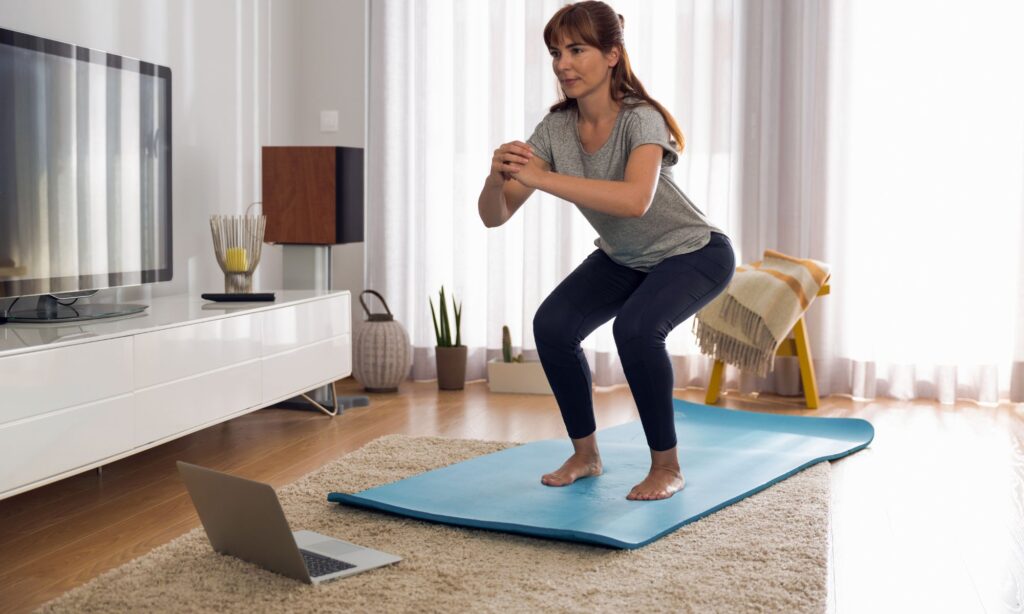Move to Grow: Why Movement Is the Key to Mental Clarity and Motivation

Table of Contents
Movement Isn’t Just Physical – It’s Mental Fuel
We often separate our mental and physical health like they live in different worlds. But the truth is, your body and brain are in constant conversation (also called the mind-body connection). And when you move your body, you do far more than build strength or flexibility – you sharpen your focus, lift your mood, and build the inner resilience it takes to grow.
If you’ve ever come back from a walk with a fresh idea or felt your stress melt away after a workout, that’s no coincidence. Movement is medicine. It’s not about burning calories or chasing a certain physique. It’s about showing up for your brain, your mood, and your future self.
Exercise = Mental Clarity, Better Mood, and Resilience
Physical activity is one of the most potent tools we have for mental well-being. Here’s what happens every time you move:
- Your brain gets more oxygen and blood flow, which supports clearer thinking.
- You release endorphins, your natural mood lifters.
- You reduce stress hormones like cortisol.
- You build emotional resilience over time, simply by doing hard things and sticking with them.
Regular movement has been shown to reduce symptoms of depression and anxiety, improve self-esteem, and increase emotional regulation. It also helps you sleep better, which in turn boosts cognitive performance.
It’s not about intensity. It’s about consistency. Even a short walk can help your brain reset and refocus.
Movement Builds a Smarter, More Adaptable Brain
Here’s something incredible: exercise literally makes your brain better.
When you move, you trigger neuroplasticity – your brain’s ability to form new connections and pathways. This is essential for:
- Learning new skills
- Adapting to change
- Recovering from setbacks
- Staying creative and curious
Studies show that physical activity increases the size of the hippocampus, the part of your brain involved in memory and emotional regulation. Movement also boosts brain-derived neurotrophic factor (BDNF), often called “fertiliser” for your brain cells.
So if you want to grow mentally, emotionally, or creatively, start by moving your body.

You Don’t Need to Be a Gym Rat – Just Keep Moving
Let’s be clear: you don’t need a gym membership, fancy gear, or an intense training plan. The magic lies in daily, intentional movement – however that looks for you.
This might mean:
- Taking a 20-minute walk in nature
- Stretching on your living room floor
- Dancing in your kitchen
- Doing a few pushups between meetings
- Practising yoga or tai chi
- Biking, hiking, or swimming
Movement should feel like something that supports you, not something you dread. The key is finding activities that fit your lifestyle and bring you energy, not stress.
Movement Fuels Motivation and Momentum
There’s a deep link between physical activity and motivation. When you move your body, you activate systems in the brain responsible for drive, focus, and follow-through.
You start to build momentum – not just physically, but mentally. You remind yourself that you can take action, handle discomfort, and show up for your goals. And that energy? It starts to ripple into other areas of your life.
Moving your body every day isn’t just about health – it’s a daily declaration of commitment to your personal growth.

Simple Ways to Move More Every Day
Here are a few ideas to make movement a natural part of your routine – no pressure, no perfection:
- Morning walk: Clear your head before the day begins.
- Stretch break: Take 5 minutes to move between tasks or meetings.
- Dance it out: Put on one song you love and move however you feel.
- Body weight workouts: Use your own body for strength – squats, planks, lunges.
- Evening yoga: Wind down with gentle movement and breath.
Pro tip: Schedule movement like any other meeting. Even 10–15 minutes a day can make a noticeable difference.
Want to Dive Deeper? 5 Books on Movement, Brain Health, and Motivation
If you’re ready to understand how physical movement can radically upgrade your mindset, creativity, and emotional well-being, these books are your next step. They explore the science of exercise not as a punishment, but as a deeply empowering act of self-care and personal growth.
Spark: The Revolutionary New Science of Exercise and the Brain, by John J. Ratey
This book is the ultimate deep dive into how exercise literally rewires your brain. Neuroscientist Dr. Ratey walks you through the connection between movement and mental performance – showing how workouts can reduce anxiety, sharpen memory, boost mood, and even improve academic or work performance. It’s the kind of book that makes you want to go for a run just to feel what your brain can really do.
The Joy of Movement, by Kelly McGonigal
More than a science book, this is a love letter to the emotional and spiritual power of movement. McGonigal explores how dance, yoga, running, and even walking with others can create joy, meaning, and connection. If you’ve ever felt moved – literally and emotionally – by a workout, this book puts that into words.
Move the Body, Heal the Mind, by Jennifer Heisz
Dr. Heisz is a cognitive neuroscientist who lays out how movement changes brain chemistry in ways that support mental health. She shares research and practical strategies for using exercise to manage anxiety, depression, and ADHD. A gentle, affirming read for anyone who wants to feel more emotionally balanced through movement.
No Sweat, by Michelle Segar
This book is perfect if you’ve struggled to build an exercise routine that sticks. Segar, a behavioral scientist, explains why willpower and discipline often fail – and how joy, motivation, and immediate benefits can help us move more consistently. Her approach is science-backed but deeply human, making it ideal for building sustainable habits.
In Praise of Walking, by Shane O’Mara
This fascinating read dives deep into the science and wonder of walking. Neuroscientist Shane O’Mara explores how this simple, everyday movement enhances brain function, boosts creativity, and fosters emotional well-being. He explains how walking strengthens memory, stimulates neuroplasticity, and even improves problem-solving. O’Mara also highlights walking’s role in social bonding and mental restoration. It’s a compelling case for why putting one foot in front of the other is one of the smartest things you can do for your mind.
Exercise for Mood and Anxiety, by Michael Otto and Jasper Smits
A more clinical read, this book is a great resource for understanding how specific types of exercise can alleviate symptoms of anxiety and depression. It’s grounded in decades of research and offers strategies for integrating exercise into mental health care, whether you’re looking to feel better emotionally or support your therapy journey.
Disclaimer: As an Amazon Associate I earn from qualifying purchases.
Conclusion: Your Best Self Doesn’t Live in a Burnt-Out Body
Let’s get real: personal growth isn’t just about mindset or productivity hacks. It’s about building the capacity to think clearly, stay emotionally steady, and show up consistently – and that starts in your body.
When your body is always in survival mode – stressed, stagnant, inflamed – it’s hard to think big, act boldly, or feel like yourself.
Movement is one of the simplest, most powerful tools to get your system out of fight-or-flight and back into a place of flow.
So if you want to grow, create, lead, or heal – start by moving. One step at a time.
Movement is not the only aspect to take care of! Find out more about the importance of the mind-body connection and what you can do to become your best self!
Frequently Asked Questions
How does physical activity improve mental health?
Regular exercise releases neurotransmitters like endorphins and serotonin, which elevate mood, reduce stress, and enhance overall mental well-being.
Can short periods of exercise be beneficial?
Yes, even brief activities like a 10-minute walk can improve mood, reduce anxiety, and boost cognitive function.
How does exercise influence brain function?
Physical activity increases blood flow to the brain, promoting neuroplasticity and improving memory, attention, and problem-solving skills.
Is it necessary to engage in high-intensity workouts?
No, moderate activities such as walking, yoga, or cycling are effective in enhancing mental health and cognitive function.
How does movement affect motivation?
Exercise activates brain areas associated with motivation, helping to increase drive and the ability to pursue goals.







